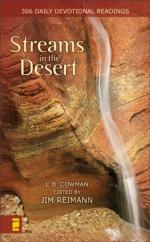|
This section contains 1,892 words (approx. 7 pages at 300 words per page) |

|
Desert ecosystems are characterized by an extremely arid, arid, or semi-arid climate, low relative humidity, high air and soil temperatures, strong winds, high solar radiation, low precipitation levels, extended drought periods, soils low in organic matter, low net primary productivity, and a spatially patchy distribution of vegetation and soil resources. In them, water is the predominant controlling factor for most biological processes; precipitation is highly variable and occurs as infrequent and discrete events throughout the year; and precipitation events are highly unpredictable in both space and time. Desert ecosystems may be classified into three groups based on annual precipitation: extremely arid (less than 60 millimeters), arid (60 to 250 millimeters), and semiarid (250 to 500 millimeters). The plant communities of arid lands expand and contract in accordance with alternating wet and dry periods as well as with anthropogenic activities that contribute to desertification (also known as land degradation). While arid ecosystems occur on...
|
This section contains 1,892 words (approx. 7 pages at 300 words per page) |

|


